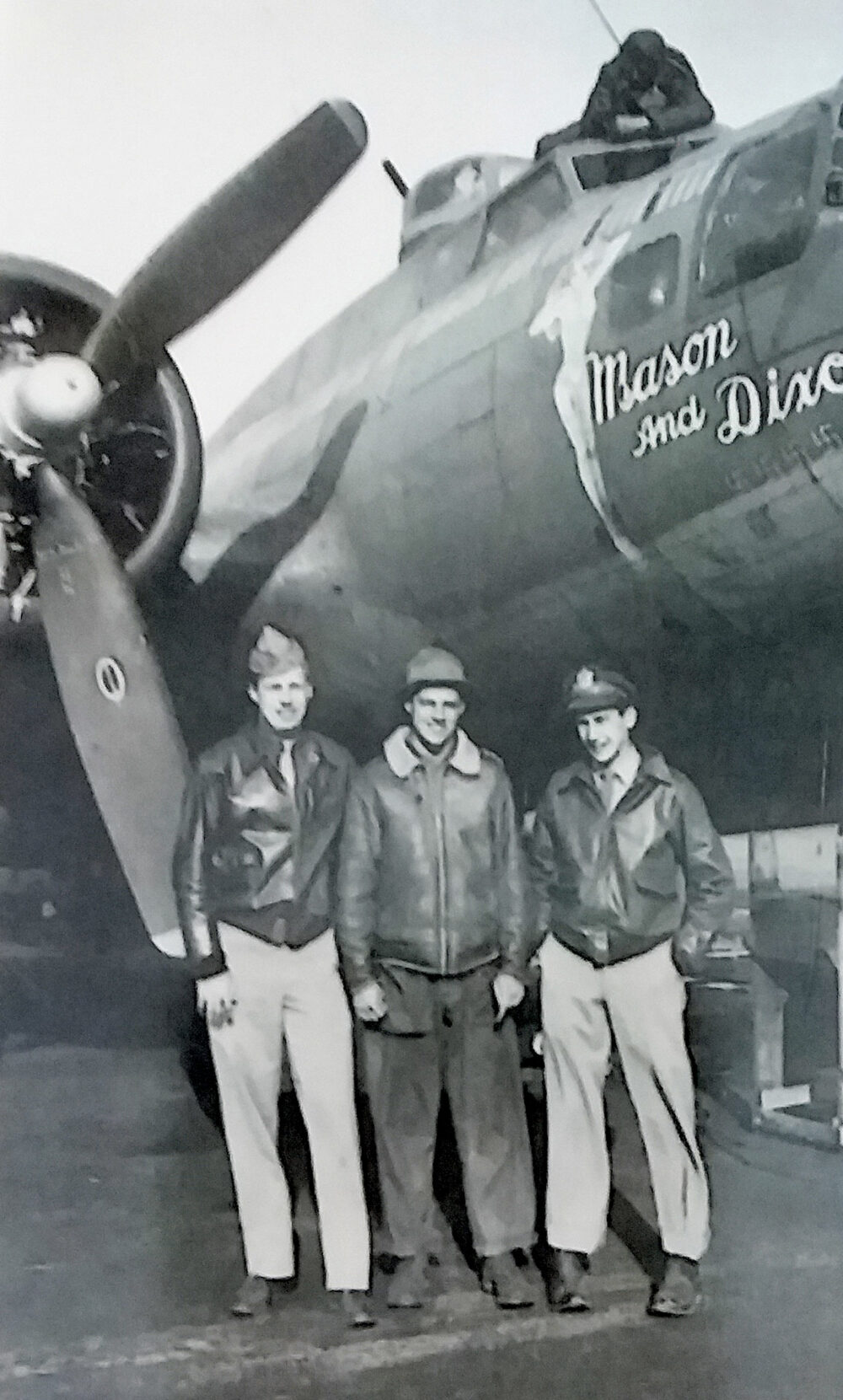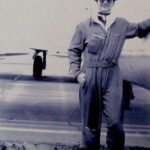by Priscilla Rall
The 35 Missions of a Rocky Ridge Flyboy
World War II took Americans to places they had never dreamed of going. Most had never ventured far from their farming communities. One of these rural youths was Vernon Keilholtz.
Born in 1923 near Rocky Ridge, Vernon took the train to school in Emmitsburg for seven years until it went bankrupt after a major snow storm. After graduating from high school, he attended the University of Maryland for one year before enlisting in the Army Air Corps in August 1942. After training in Florida, he qualified for mechanics’ school in Tulsa, Oklahoma, and in Michigan. Just before being sent to the Pacific, he was ordered to San Antonio for cadet training where he qualified as a pilot or co-pilot. In April 1943, he first soloed in a Fairchild 19A (manufactured in Hagerstown). Vernon then was transferred to Arkansas where he shared his barracks with the future entertainer George Goebbels.
At last, Vernon was assigned as the co-pilot of a B-17 along with nine other crew members. They were to stay together for the duration of their service. They left in May 1943 to fly to England from Nebraska, refueling in Gander, Newfoundland, and finally reaching Scotland. In England they were assigned to the 100th Bomb Group (the “Bloody Hundredth”) of the 8th Air Force, with the 351st Squadron stationed at Thorpe Abbott in southern England. Vernon’s first mission was shortly after D-Day on June 12 with Harvey Dickert as pilot. It was supposed to be a “milk run” looking for “targets of opportunity,” but their flight path took them over Dunkirk where the Germans had a plethora of anti-aircraft guns. One plane was hit, caught fire, and plunged into the English Channel. Miraculously, four airmen were rescued, but the rest perished. Vernon and his crew flew many missions to support our ground troops. On June 25, they were ordered to load up with cannisters filled with equipment for the French underground. They flew just 50 feet above the ground and their drop zone was illuminated by flares. They were so low that they could see the French women and children waving at them!

Their plane, the “Mason and Dixon” (named for the previous pilot and co-pilot, and not for the crew members who were from Gettysburg and Maryland) flew many missions to Berlin. They were part of what the military terms “maximum effort” as just one of over 1,000 planes flying from airfields all over Britain. The planes would enter Germany from Prussia where the marshy land precluded the placement of large gunnery batteries. Then they would turn south for their targets. Vernon made bombing runs over Nuremberg and Bremen where the enemy had military assembly plants and ball bearing factories.
The squadron’s most deadly mission was on September 11, 1944, when 36 planes successfully hit the industrial area of the Ruhr Valley but were ambushed by an estimated 100 enemy fighters who shot down 12 U.S. planes as there were no Allied fighters for protection. Once enemy flack hit an oxygen canister under the pilot’s seat. An explosion followed and filled the cockpit with dust and papers. Fortunately, that was the only damage and they continued home safely. The planes routinely flew at 26,000 feet with temperatures of -30 degrees. All of the crew had heated seats to take off the chill, but it was still a cold business. When they returned to their base, the crew would be treated to a shot of whiskey and a package of cigarettes.
Early in the war, the airmen only had to complete 25 missions to be sent home, but that increased to 30 and finally to 35. When Vernon reached that goal, he sailed home on the Queen Mary. She had a speed of 31 knots and zig-zagged to elude any German subs lurking in the depths. He was a happy man when finally reaching the New York Harbor and seeing the Statue of Liberty waiting to greet him. He was granted a 23-day leave, but after a quick visit home, he traveled to Detroit were his sweetheart, Bea Long, was stationed at a hospital. She had been a nurse cadet at FMH. On November 13, Bea and Vernon were married at a church in Mt. Pleasant. Vernon was later assigned as a flying instructor pilot, flying B-24s and B-26s. As his time was not yet up, he was sent to the Pacific, ending up in Tokyo. In Japan, he was placed in charge of the motor pool in Nagoya. Traveling throughout Japan, he saw the tremendous damage as a result of the fire-bombing and the two nuclear bombs. Finally, Captain Keilholtz flew home and was discharged on November 23, 1946. For his courage and service, he was awarded the Air Medal with six Oak Leaf Clusters and the Distinguished Flying Cross.
Bea and Vernon raised their family in a lovely brick home east of Emmitsburg. They had a daughter and a son while Vernon became a cattle dealer, and few knew of his war time heroics. Sadly, Vernon passed away in April 2013, mourned by his family and many friends. Not only was Vernon a friend of mine, but he was the first veteran that I interviewed for the Frederick County Veterans History Project. A true representative of the Greatest Generation, his experiences in WWII deserve to be shared, especially by those who knew him.
If you are a veteran or know a veteran who is willing to tell his or her story, contact the Frederick County Veterans History Project at priscillarall@gmail.com.


